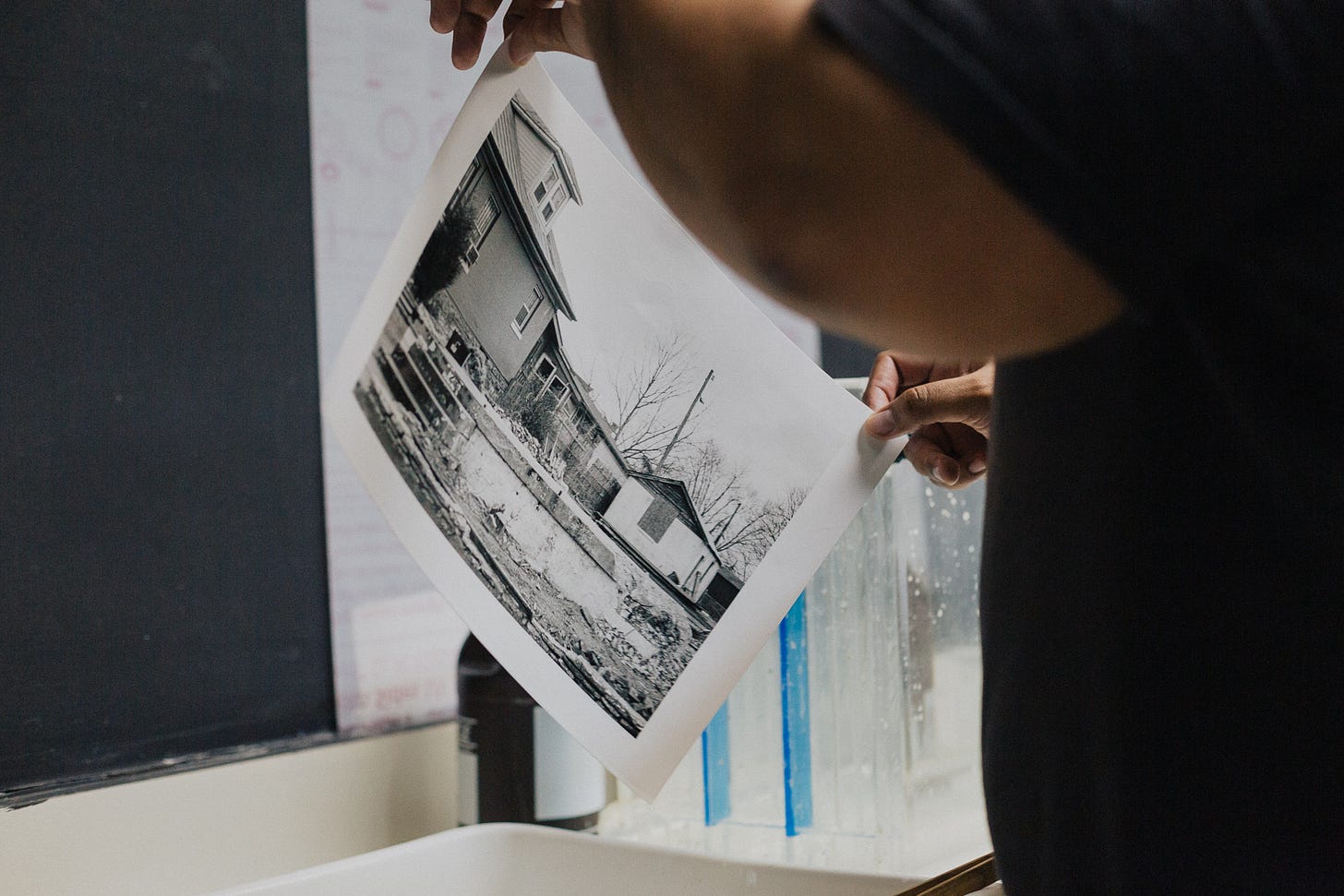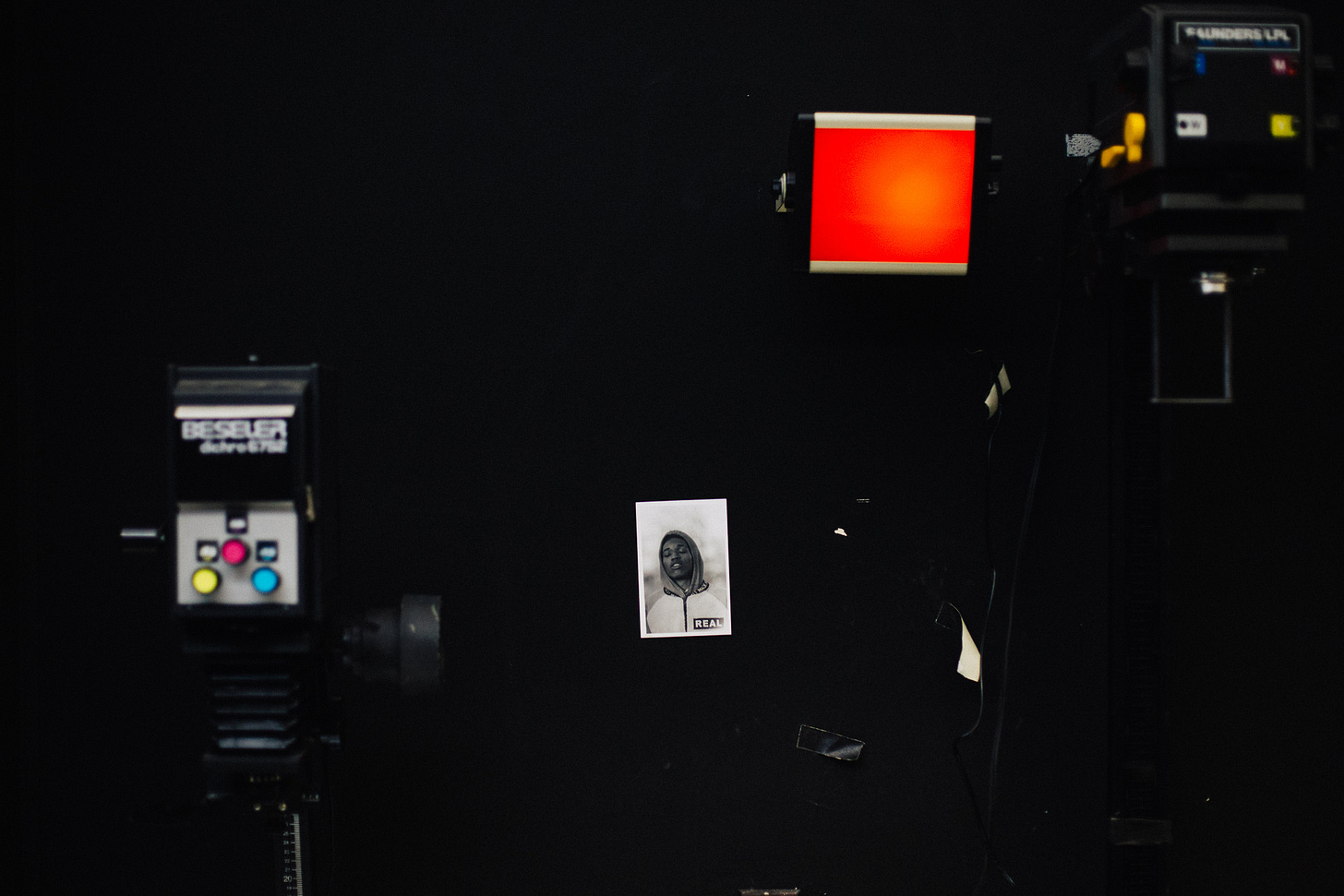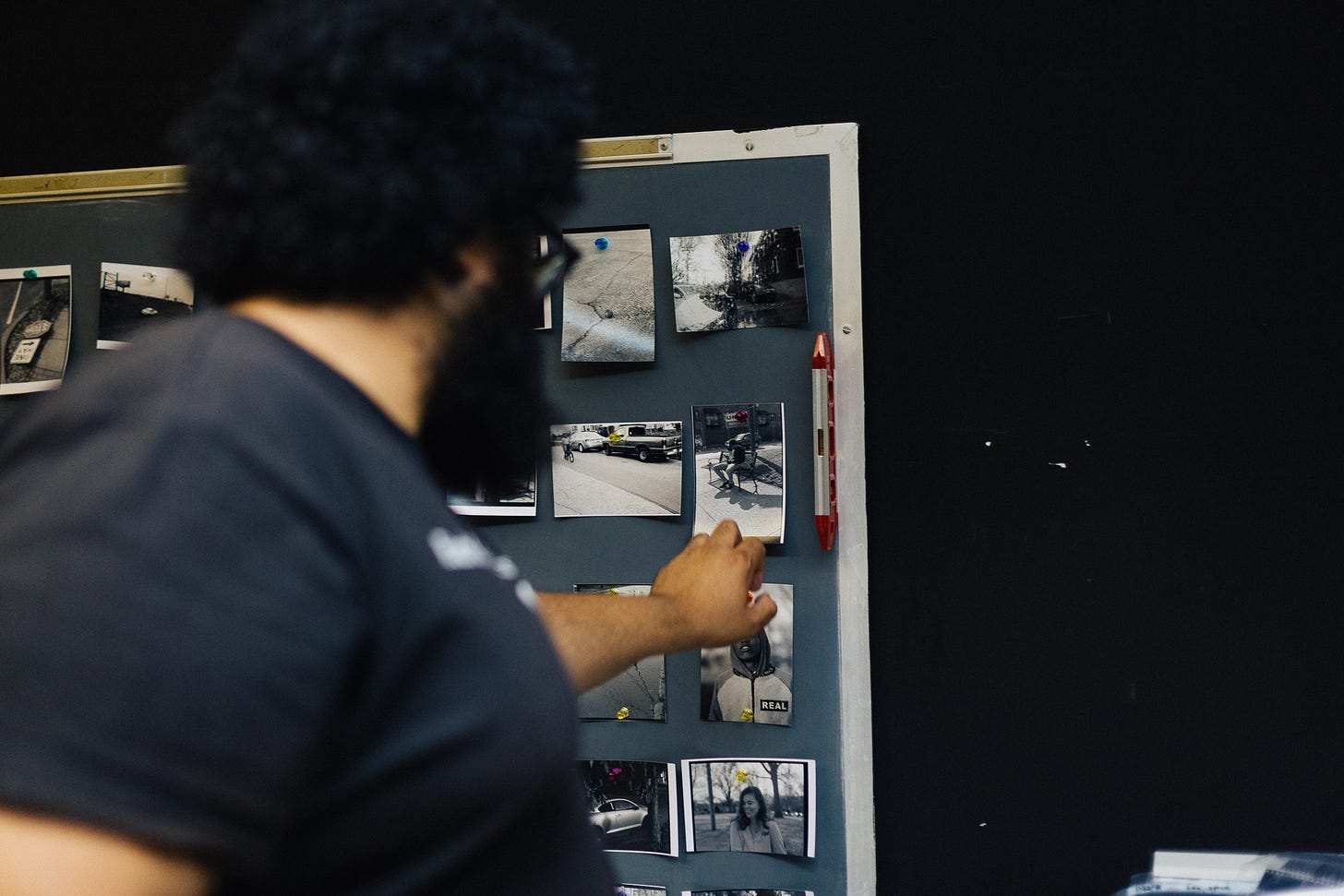Conversations with Creators: Andrew Cenci
A new photo story featuring Louisville-based photographer, Andrew Cenci.
Our photo series this week is with Louisville-based photographer Andrew Cenci. Andrew primarily creates images on film, choosing to work with traditional practices in order to create bodies of work with poetic sensibility.
Recently, I visited Andrew in his darkroom lab to talk about his creative process and his photographs. Here are some images from my visit and a glimpse into my conversation with him.
For those who aren’t familiar with you, how would you describe yourself and the work you do?
My name is Andrew Cenci, and I am a photographer. I make most of my photos on film, primarily black and white, and I like to use traditional processes to create darkroom prints. I also do editorial work and have been featured in The New York Times, The New Yorker, and Bloomberg - all the fun stuff.
Who or what has influenced your work and creative process?
Two photographers come to mind for me: Andre Wagner and Mark Steinmetz. And then when I think back to my years as a high schooler, I remember getting into noir films and crime films, and I think that really grew my appreciation for black and white.
What's been your experience doing editorial work?
For the most part, it's been really collaborative. I love the editors I work with. Generally, I'm given a brief for the photos so there's always an idea of what needs to be captured. Sometimes you get four hours at an art exhibit to create several photos, and sometimes you get 5 min with a head basketball coach at the end of a practice.
“You have to be prepared for any situation and be ready to improvise.”
You also have to think about how the photo will be used in print and how that impacts the way you frame your photos.
What part of darkroom printing has presented itself as a learning curve?
Learning in general. I didn't go to school for photography, and I had never taken a darkroom class, so I'm completely self-taught. Everything I know is from what I've learned online. There's been a lot of trial and error. Along the way, people have shared their knowledge with me, so I like to share my knowledge with other people as well.
Why stick with traditional methods of film photography and darkroom printing?
I've always been a person who's curious about the original intent of something. For me, that was my drive for getting a film camera in the first place. I wanted to know what it was like to shoot a film camera, so I bought a camera off of eBay, and now photos from six years ago are showing up in the body of work I'm printing today.
In what ways do you see yourself in your work?
There's a quietness and stillness in my work, and I think that can be seen in my energy. Even though I'm a big guy, I feel like I don't take up a bunch of space, and I want my photos to encapsulate that. I'm drawn to quieter moments, rather than large, in-your-face moments.
What do you most enjoy about photographing in the street?
I love being able to turn off my brain and just react to what my eye is interested in. When I'm setting up a portrait, I'm thinking through what I'm doing. On the street, I'm reacting to something that caught my eye, and subconsciously there's something in me reaching out to that, and I want to create an image that expresses whatever that is.
What advice would you share with someone who is early on in their career, aspiring to do what you do?
See if there are any community darkrooms or classes in your area. I'm very much a YouTube University person and I've learned a ton from there.
I'd also say it can be expensive, so I would say to start with shooting digital and get comfortable with cameras and settings and what makes a good exposure. Then, you can translate that to shooting film pretty easily. Shooting film really isn't that much different than shooting digital, you're ISO is just set by the film you choose.
When considering what it means to leave behind a legacy, what would you say you want your creative legacy to be?
I want to leave behind photos that make people feel things, whether that be happiness, introspection, or sadness. I want to leave behind photos that allow people to experience the full breadth of humanity. I want my photos to be alive and really honest, and provide a depiction of the beauty of everyday life.
Anything else you want to bring people into?
I have a Patreon where I send out postcards every month of darkroom prints, and each month is a different photo. This year, I've been doing a photo to represent a track from Kendrick Lamar's Good Kid, M.A.A.D City. And then if you're in Louisville or around Louisville, the Louisville Photo Biennial is happening this Fall. And then just keep your eyes peeled, I have some things in the works.
Thanks for reading this week’s Conversation with Creators photo story. To keep up with Andrew and his work, check out his Instagram.
And if you haven’t already, make sure to subscribe to our podcast on Apple, Spotify, or Google. You can also stay updated with How You Create by following us on Twitter and Instagram.











